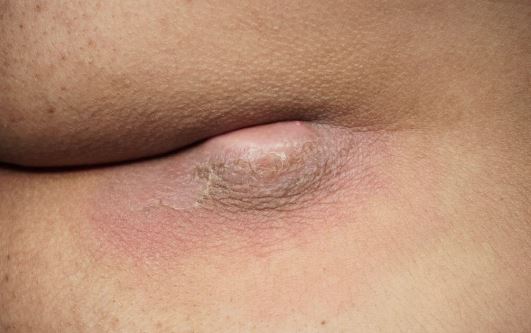Homeopathy for Pilonidal Cyst: A Natural Approach to Healing
Pilonidal cysts, often a painful and persistent issue, are sac-like structures that form at the cleft of the buttocks near the tailbone. Characterized by the trapping of hair and skin debris, these cysts can become infected, leading to the formation of abscesses and sinus tracts. Conventional treatments typically involve surgical interventions, which can be painful and may not always prevent recurrence. Homeopathy offers a safe and effective alternative, focusing on treating the condition from the inside out without the need for invasive procedures. This comprehensive blog explores the top homeopathic remedies for pilonidal cysts and how they can help manage this challenging condition.
Understanding Pilonidal Cysts
The term “pilonidal” means “nest of hairs,” reflecting the common finding of hair within these cysts. They develop due to skin penetration by loose hairs, which, exacerbated by friction and pressure, leads to a foreign body reaction. Over time, this can result in an infectious process, forming abscesses and sinuses that discharge pus. Common symptoms include pain, redness, swelling, and the discharge of pus or blood, often accompanied by a foul odor.
Understanding Pilonidal Cyst: Signs, Symptoms, Causes, and Prevention
Pilonidal cysts are a common condition characterized by the formation of small cysts or abscesses near the tailbone, often in the cleft of the buttocks. While they can be asymptomatic, these cysts can become infected, leading to painful and uncomfortable symptoms. This detailed guide explores the signs and symptoms of pilonidal cysts, their causes, risk factors, and practical preventive measures. Also Read: Homeopathy Treatment For Pilonidal Sinus
Signs and Symptoms of Pilonidal Cysts
Pilonidal cysts may not always show symptoms but can become problematic when infected. Key symptoms include:
- Presence of a Dimple or Swelling: Often located in the cleft of the buttocks, this dimple can vary in size and may occasionally appear in areas like the armpits, navel, or even the genital region.
- Formation of a Cyst or Abscess: Initially forming as a fluid-filled sac, it can progress into an abscess that is typically painful and filled with pus.
- Redness and Tenderness: The affected area may become red, itchy, and tender to the touch, often making sitting and physical activities uncomfortable.
- Sinus Tract Formation: In some cases, a channel or tract can develop, leading from the infection site to the surface of the skin, resulting in the discharge of pus or blood. This discharge might have a foul odor, and hair protruding from the tract is often visible.
- Systemic Symptoms: Some individuals may experience nausea, fatigue, and a low-grade fever as part of the body’s response to the infection.
Causes of Pilonidal Cysts
The exact origins of pilonidal cysts are not well-understood, but they are thought to be caused by the penetration of loose hair into the skin through friction or direct pressure. This situation is aggravated by activities like bicycling or constant sitting, which push the hair deeper into the skin. The body reacts to this foreign body by creating a cyst around it, which can lead to an abscess if not properly managed.
Risk Factors
Several factors increase the likelihood of developing pilonidal cysts:
- Excessive Body Hair: Thick, stiff body hair can contribute to the formation of pilonidal cysts.
- Inactive Lifestyle: Prolonged sitting, such as in office workers or drivers, can increase pressure on the tailbone area, contributing to cyst formation.
- Obesity: Higher body weight can increase the risk of pilonidal cysts due to increased pressure and friction in the buttock area.
- Age and Gender: Most common in young adults aged 20-35 years, men are more frequently affected than women.
- Genetic Predisposition: A family history of pilonidal cysts can increase susceptibility.
- Excessive Sweating: Can exacerbate the condition by making the skin more susceptible to irritation and infection.
Homeopathy for Pilonidal Cysts
Homeopathy addresses pilonidal cysts by enhancing the body’s natural healing capacity and resolving the infection from within. The remedies used are derived from natural substances and are selected based on the individual’s specific symptoms and overall health profile. Here are some of the most effective homeopathic remedies for pilonidal cysts:

- Silicea: Often the first choice for treating pilonidal cysts, Silicea is effective when the cyst discharges pus. It aids in reducing inflammation, expelling trapped hair and pus, and healing the sinus tract. Patients needing Silicea may experience offensive, sometimes scanty or copious pus.
- Myristica Sebifera: Known as a natural surgical knife, Myristica accelerates the suppuration process, helping to hasten the discharge of pus. It is particularly useful when the sinus is well-formed and discharging, reducing the need for surgical intervention. Also Read: Homeopathy Treatment For Fistula
- Hepar Sulph: Useful in early infection stages when the cyst is painful but not yet discharging. Hepar Sulph helps to localize the infection, facilitating the formation and discharge of pus, thereby relieving pain and promoting healing.
- Calcarea Sulph: Recommended when the pus discharge is thick, yellow, and lumpy, often blood-stained. Calcarea Sulph aids in speeding up the pus discharge process and effectively healing the affected area.
- Calendula: Used primarily for its remarkable healing properties, Calendula is beneficial when the infected area is extremely sore and painful. It promotes tissue healing, reduces pus formation, and alleviates discomfort.
- Merc Sol: Suitable for cases with profuse greenish pus discharge accompanied by burning and stinging pain. Merc Sol addresses the offensive nature of the discharge and helps reduce excessive sweating associated with the infection.
- Phosphorus: Indicated for cysts with bloody discharge and surrounding skin burning. Phosphorus helps control hemorrhage and supports the healing of the sinus.
- Lycopodium Clavatum: Appropriate for milky-white pus discharge with a putrid odor. Lycopodium addresses periodic recurrences of the cyst, helping to manage the condition long-term.
Homeopathy for Pilonidal Cysts: Integrating Homeopathy into Your Care Plan
To effectively utilize homeopathy for pilonidal cysts, consultation with a professional homeopath is essential. They can accurately assess the specific characteristics of your condition and recommend a personalized treatment plan. Homeopathic remedies are particularly advantageous because they offer a non-invasive approach, minimize the risk of recurrence, and support overall health.
Understanding Pilonidal Cyst: Signs, Symptoms, Causes, and Prevention
Pilonidal cysts are a common condition characterized by the formation of small cysts or abscesses near the tailbone, often in the cleft of the buttocks. While they can be asymptomatic, these cysts can become infected, leading to painful and uncomfortable symptoms. This detailed guide explores the signs and symptoms of pilonidal cysts, their causes, risk factors, and practical preventive measures.
Signs and Symptoms of Pilonidal Cysts
Pilonidal cysts may not always show symptoms but can become problematic when infected. Key symptoms include:
- Presence of a Dimple or Swelling: Often located in the cleft of the buttocks, this dimple can vary in size and may occasionally appear in areas like the armpits, navel, or even the genital region.
- Formation of a Cyst or Abscess: Initially forming as a fluid-filled sac, it can progress into an abscess that is typically painful and filled with pus.
- Redness and Tenderness: The affected area may become red, itchy, and tender to the touch, often making sitting and physical activities uncomfortable.
- Sinus Tract Formation: In some cases, a channel or tract can develop, leading from the infection site to the surface of the skin, resulting in the discharge of pus or blood. This discharge might have a foul odor, and hair protruding from the tract is often visible.
- Systemic Symptoms: Some individuals may experience nausea, fatigue, and a low-grade fever as part of the body’s response to the infection.
Causes of Pilonidal Cysts
The exact origins of pilonidal cysts are not well-understood, but they are thought to be caused by the penetration of loose hair into the skin through friction or direct pressure. This situation is aggravated by activities like bicycling or constant sitting, which push the hair deeper into the skin. The body reacts to this foreign body by creating a cyst around it, which can lead to an abscess if not properly managed. Also Read: Homeopathy Treatment For Piles
Risk Factors
Several factors increase the likelihood of developing pilonidal cysts:
- Excessive Body Hair: Thick, stiff body hair can contribute to the formation of pilonidal cysts.
- Inactive Lifestyle: Prolonged sitting, such as in office workers or drivers, can increase pressure on the tailbone area, contributing to cyst formation.
- Obesity: Higher body weight can increase the risk of pilonidal cysts due to increased pressure and friction in the buttock area.
- Age and Gender: Most common in young adults aged 20-35 years, men are more frequently affected than women.
- Genetic Predisposition: A family history of pilonidal cysts can increase susceptibility.
- Excessive Sweating: Can exacerbate the condition by making the skin more susceptible to irritation and infection.
Conclusion
Homeopathy for Pilonidal Cysts provide a promising alternative to conventional surgical treatment, offering relief without the pain and complications of invasive procedures. By addressing the underlying causes and enhancing the body’s own healing mechanisms, homeopathy not only treats pilonidal cysts but also improves the patient’s overall well-being, making it an ideal choice for those seeking a natural approach to health.



